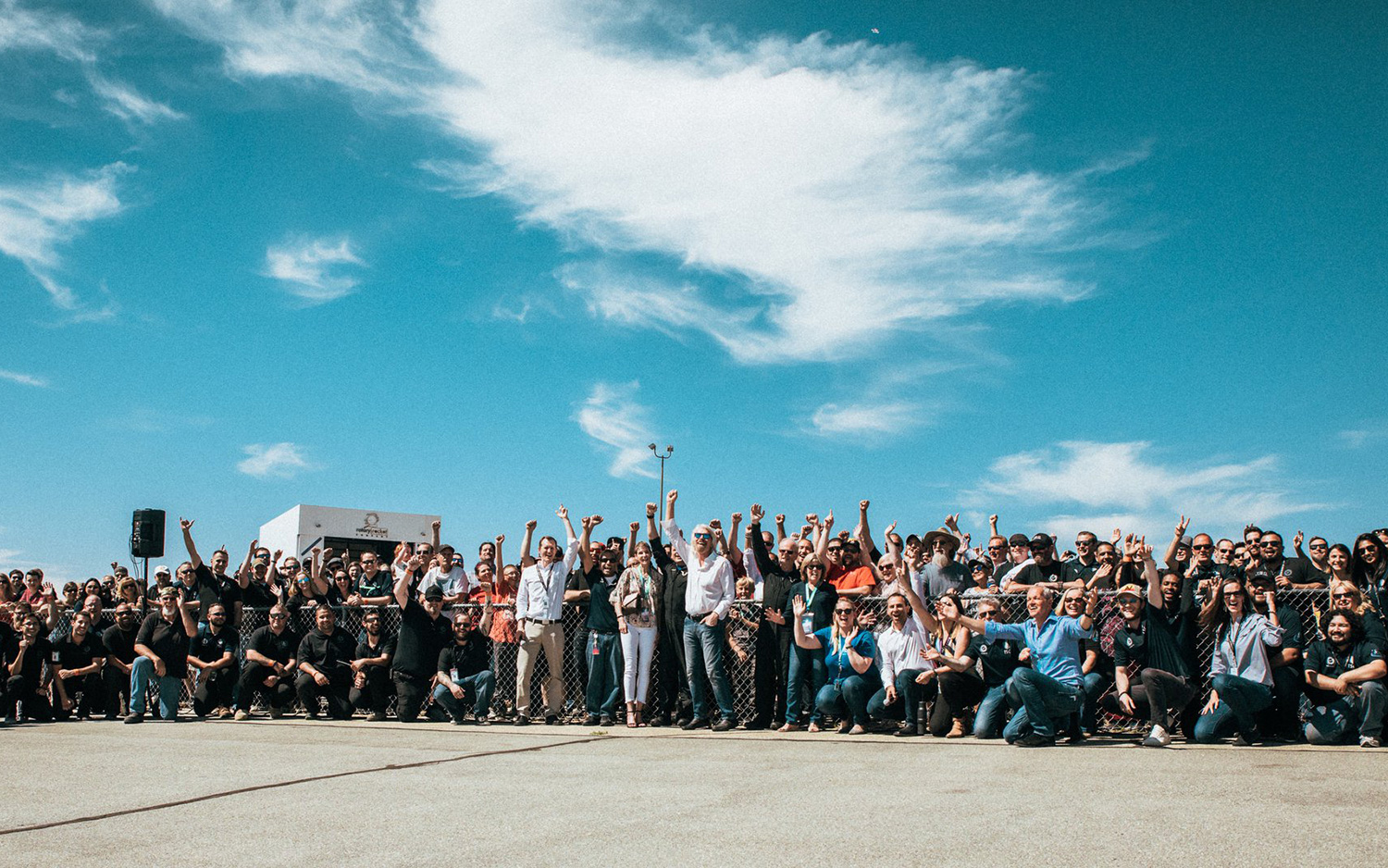In Photos: Virgin Galactic's VSS Unity Aces 2nd Powered Test Flight
Rolling Out
Virgin Galactic's newest suborbital space plane completed its second rocket-powered test flight on May 29, 2018. See photos here and read our full story (and see a video!) here. VSS Unity and its carrier aircraft, known as VMS Eve, roll out in the predawn light on May 29, 2018.
Taking Off
VMS Eve, Virgin Galactic's mothership for its SpaceShipTwo fleet, carries Unity aloft.
Watching from the Ground
Virgin Galactic founder Sir Richard Branson (center) and company CEO George Whitesides (left) chat during Unity's test flight.
Powering Up
After being released by VMS Eve, Unity blasts itself upward using its onboard rocket motor.
Flame Tail
Unity fired its engine for 31 seconds during the flight, as planned. The vehicle reached a top speed of Mach 1.9 and a maximum altitude of 114,500 feet (34,900 meters).
SpaceShipTwo Unity Feathers Its Tail
Virgin Galactic's SpaceShipTwo Unity's tail boom is seen in its "feathered" position to maintain stability during its descent in a successful rocket-powered test flight on May 29, 2018 over California's Mojave Desert.
Wheels Down
VSS Unity touches down, ending the test flight.
Breaking space news, the latest updates on rocket launches, skywatching events and more!
Celebrating Success
Branson and other Virgin Galactic team members celebrate a successful test flight.
Sir Richard Branson Celebrates SpaceShipTwo
Sir Richard Branson, Virgin Galactic's billionaire founder (center), celebrates after the successful second powered flight test of the VSS Unity space plane over California's Mojave Desert on May 29, 2018.
How Virgin Galactic's SpaceShipTwo Passenger Space Plane Works (Infographic)
SpaceShipTwo will carry six passengers up past 328,000 feet altitude (100 kilometers), the point where astronaut wings are awarded. See how Virgin Galactic's SpaceShipTwo works in this SPACE.com infographic.

Michael Wall is a Senior Space Writer with Space.com and joined the team in 2010. He primarily covers exoplanets, spaceflight and military space, but has been known to dabble in the space art beat. His book about the search for alien life, "Out There," was published on Nov. 13, 2018. Before becoming a science writer, Michael worked as a herpetologist and wildlife biologist. He has a Ph.D. in evolutionary biology from the University of Sydney, Australia, a bachelor's degree from the University of Arizona, and a graduate certificate in science writing from the University of California, Santa Cruz. To find out what his latest project is, you can follow Michael on Twitter.










